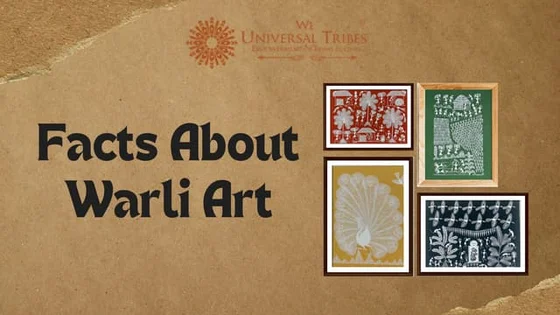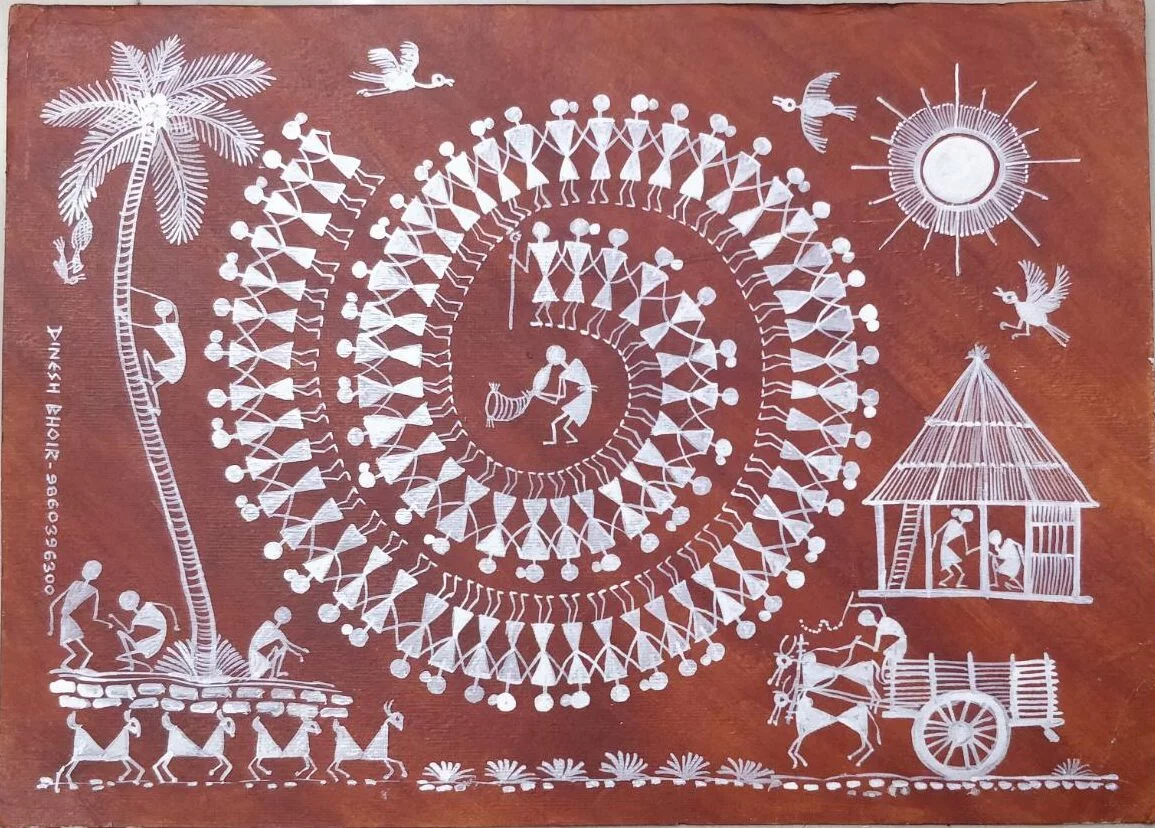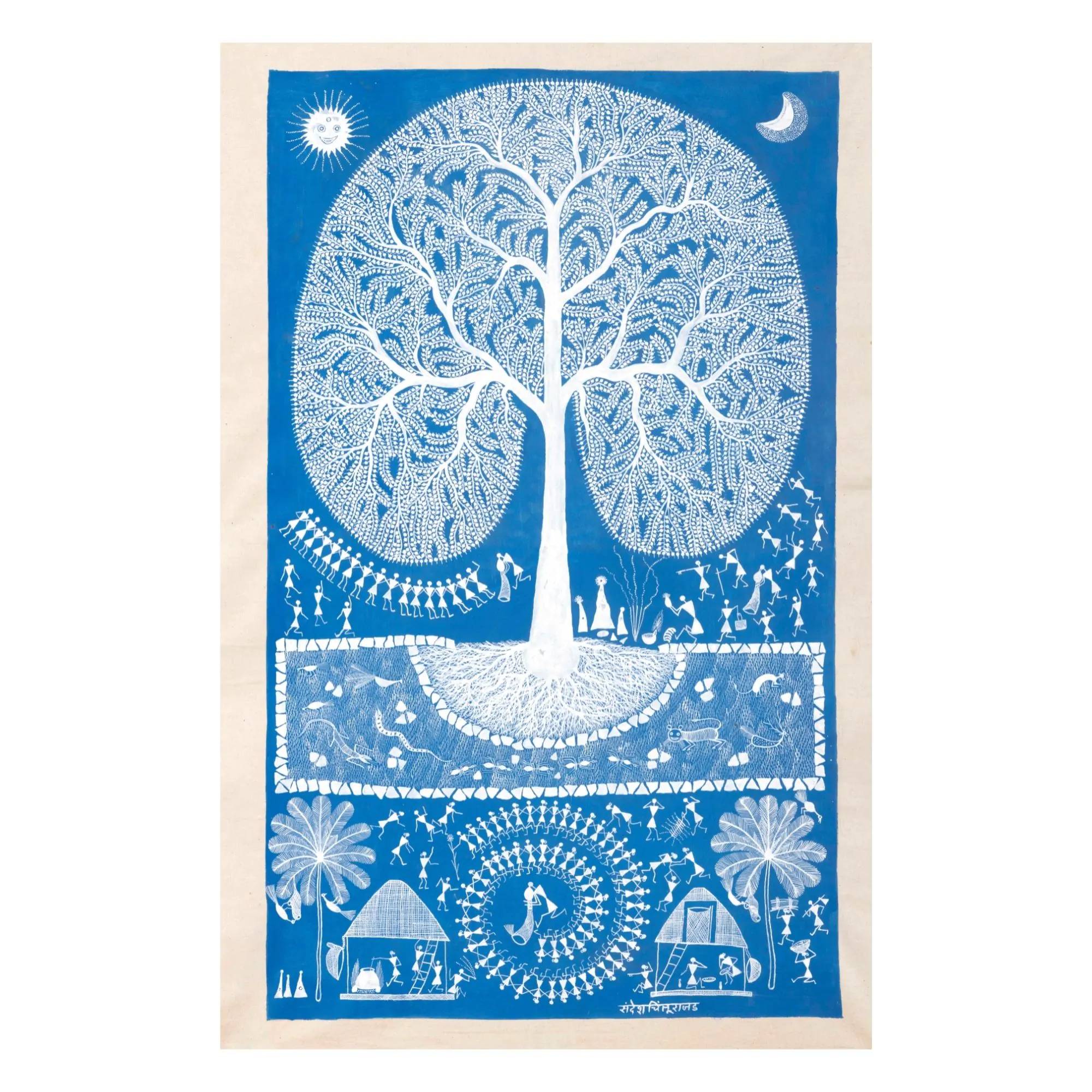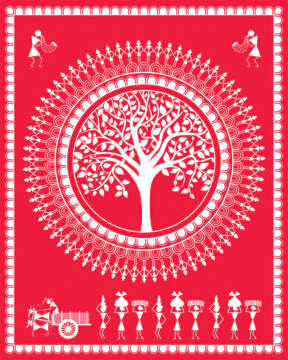
"Lines of Life: The Storytelling of Warli Art"
Warli art is a traditional tribal art form from Maharashtra, India, using simple geometric shapes to depict village life, and is often drawn in white on mud walls using rice paste.

The Warli Art Technique (Short Description)
The approach used in Warli art is very basic but symbolic:
Medium:
Usually painted on mud hut walls. seen on canvas, paper, and fabric today as well.
A paste of rice flour and water, occasionally combined with gum for binding, is used to create the color.
Brush:
Traditionally, a chewed bamboo stick was used to draw delicate lines.
Style:
Makes use of simple geometric forms
A circle that symbolizes the sun and moon
Triangle: a representation of mountains and trees
Square: a hallowed space or the earth
Geometric Motifs: The art uses basic geometric shapes:
Circle – representing the sun and moon.
Triangle – symbolizing mountains and trees.
Square – indicating human-made enclosures or sacred spaces (e.g., the chauk for rituals).
Themes:
Daily life: Farming, fishing, cooking, hunting.
Festivals and rituals: Marriage ceremonies (Lagnacha chauk), harvests.
Nature and harmony: Trees, animals, and humans shown in peaceful coexistence.
Dance and music: Often depicted in the iconic tarpa dance, where men and women form circles.






Tree Painting (Brief Overview)
In Warli art, trees are regarded as a central and symbolic element, through which nature, life, and balance are represented in the tribal worldview.
Key Features of Tree Paintings in Warli Art:
Symbol of Nature:
The connection between humans and the environment is often symbolized by trees. They are usually surrounded by scenes of daily life—such as farming, dancing, or animals resting—depicted in contemporary art.Stylized Form:
Trees are depicted using simple lines and geometric shapes. A triangular or branched pattern is typically used, allowing them to be stylized and easily recognized.Cultural Importance:
Some trees, such as the banyan, are regarded as sacred and are often featured in ritual or ceremonial scenes in contemporary art.

Notable Warli Artist:
Jivya Soma Mashe (1934–2018) is the most well-known Warli artist. He played a crucial role in bringing Warli art from the walls of tribal homes to global art galleries. His work transformed this folk tradition into a respected form of contemporary art while preserving its cultural essence.
